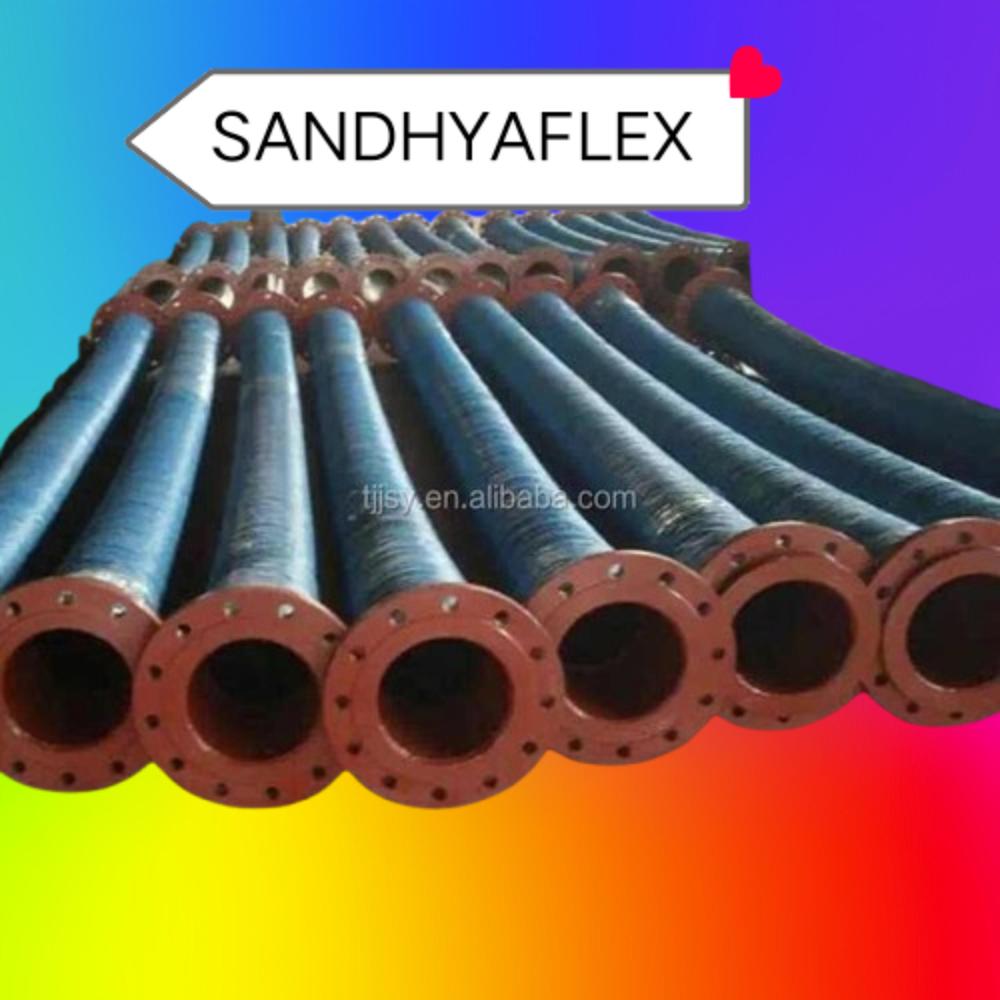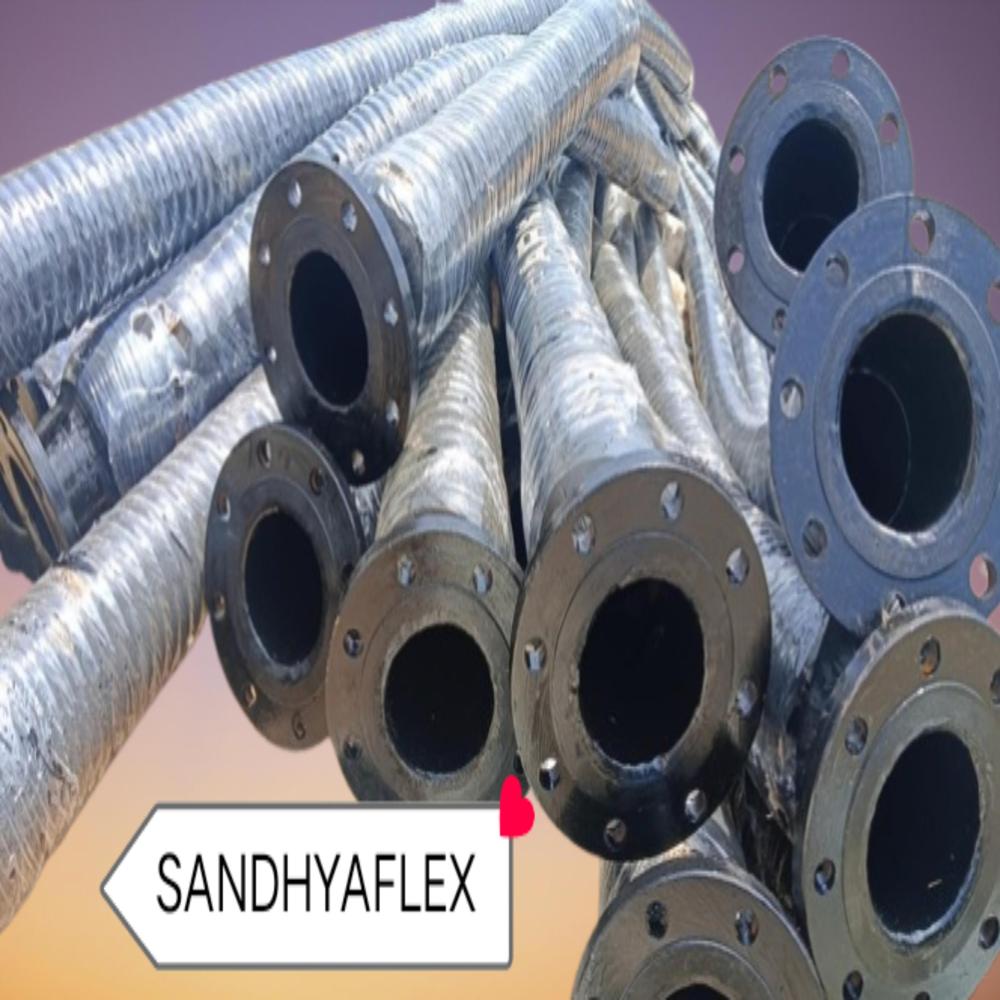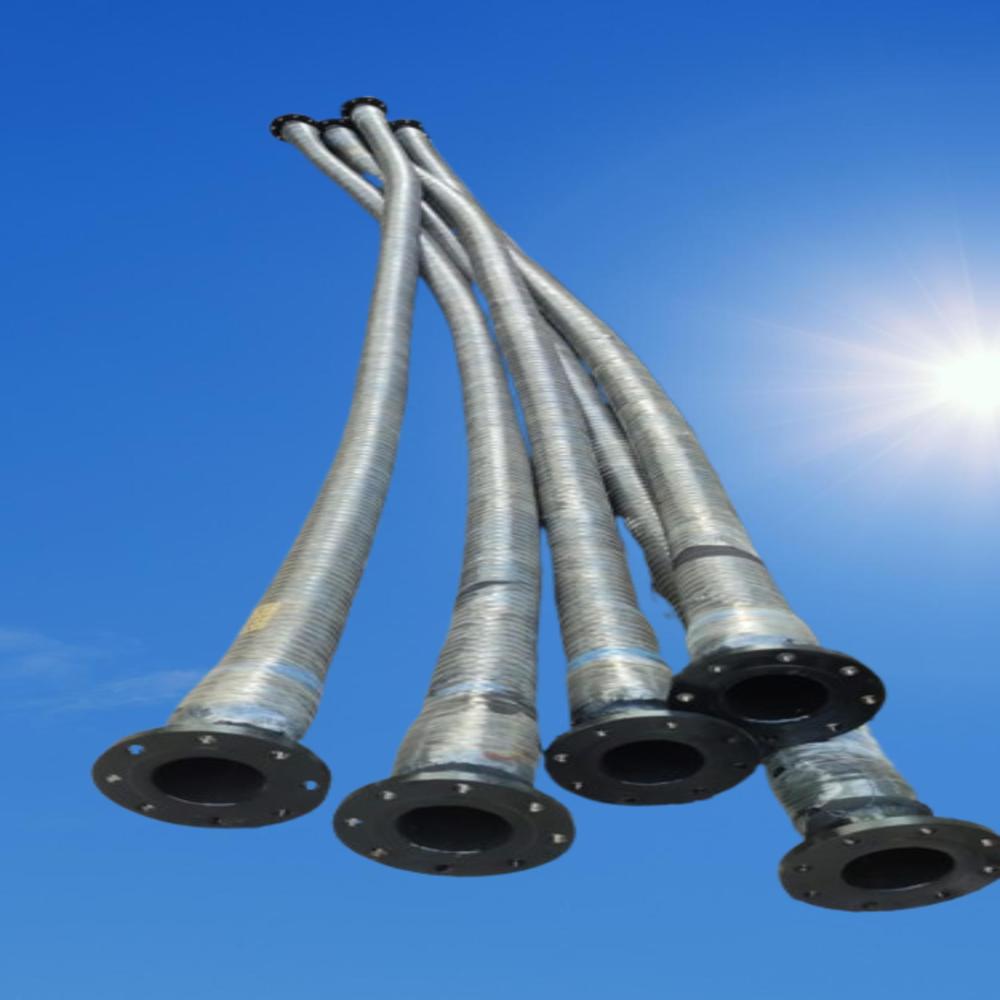Cement Feeding Rubber Hose
Price 1600.0 INR/ Meter
Cement Feeding Rubber Hose Specification
- Connection Type
- MS Flange
- Width
- 6000 Millimeter (mm)
- Usage
- Cement and Bulker
- Weight
- 5 Kilograms (kg)
- Cover
- Rubber
- Height
- 4 Inch (in)
- Shape
- Round
- Color
- Black
- Length
- 6000 Millimeter (mm)
- Medium
- Air
- Hardness
- 60
- Size
- 100MM ID
- Product Type
- Corrugated and Plain
- Reinforcement
- Steel and Reinforcement
- Material
- Rubber
- Temperature
- 70 Celsius (oC)
- Pressure
- 10 Bar
- Inside Diameter
- 100 Millimeter (mm)
- Outside Diameter
- 120 Millimeter (mm)
- Warranty
- 6
Cement Feeding Rubber Hose Trade Information
- Minimum Order Quantity
- 1 Meter
- Delivery Time
- 7 Days
About Cement Feeding Rubber Hose
Here is a detailed technical summary of Sandhyaflex Cement Feeding Rubber Hose based on manufacturer specifications, and some product examples you can look at. If you like, I can also compare across brands or help you choose based on your operating conditions (pressure, temperature, abrasion, etc.).
Sandhyaflex Cement Feeding Rubber Hose Specifications & Features
From Sandhyaflex (Sandhya Enterprises) technical sheets: (Tistatic)
| Parameter | Value / Description |
|---|---|
| Working Pressure (W.P.) | 10 bar ( 10 kg/cm) (Tistatic) |
| Test / Proof Pressure | 1.5 W.P. (i.e. 15 bar) (Tistatic) |
| Burst / Peak Pressure | ~3 W.P. (i.e. ~30 bar) (Sandhya Enterprises) |
| Vacuum / Suction Capability | Vacuum (min) ~ 700750 mm Hg (~0.9 bar) (Sandhya Enterprises) |
| Temperature Range | ~ 1 C to +70 C (some sources mention up to +100 C) (Tistatic) |
| Lining / Tube Material | Blended natural rubber + synthetic rubber (NR / SBR) with anti-abrasive properties (Tistatic) |
| Cover / Outer Material | Synthetic rubber resistant to weather, ozone, abrasion (Tistatic) |
| Reinforcement | Multiple plies of synthetic textile cord + embedded helical galvanized steel wire; also a static wire path to ground static charges (Tistatic) |
| Safety / Design Factor | 3 : 1 (Tistatic) |
| Size / Length Options | Available in diameters (ID) from ~ 75 mm (3 ") up to 300 mm (12 ") and more. Maximum standard supplied lengths up to 15 m in many sizes. (Tistatic) |
| Wall Thickness (example) | For 12" (300 mm) ID, wall thickness ~ 20 mm in one specification sheet (Tistatic) |
| End Fittings / Connections | Built-in flanges (MS or SS), cam-lock couplings, custom ends as per standard ASA / ANSI / BS / DIN. (Tistatic) |
| Standards / Compliance | Manufacturers refer to IS:13071-1991 for cement feeding rubber hoses. (Tistatic) |
Key Features & Uses
-
Highly abrasion resistant inner lining to handle cement, fly ash, mortar, and other abrasive dry bulk materials.
-
Flexible hose construction to allow bending and ease of installation on job sites.
-
Good suction strength to prevent collapse when used on negative pressure side (suction).
-
Weather-, ozone-, and environmental-resistant outer cover so it can be used outdoors.
-
Static discharge path (via static wire) to reduce risk of static charge build-up when moving dry powders.
-
Used in bulker truck unloading, silo feeding, pneumatic cement conveying, concrete placement in building, dam, road works etc. (Sandhya Enterprises)
Product Examples You Can Consider
Here are a few example products (cement feeding / abrasive-hose style) you can check out and compare with Sandhyaflex:
Cement Feeding Rubber Hose (26)
standard size range
1,800
Black Cement Feeding Rubber Hose, 6m
6m length
750
Cement Feeding Rubber Hose with Flange
with flange
1,800
Heavy Duty Cement Feeding Rubber Hose
heavy duty
9,000
Here are some details:
-
Cement Feeding Rubber Hose (26): This is a general-purpose cement feeding hose, usable in typical size ranges of 2" to 6".
-
Black Cement Feeding Rubber Hose,6m: A 6 m length hose, good for medium distance setups.
-
Cement Feeding Rubber Hose with Flange: Comes with built-in flanged end connections for easier installation in rigid piping systems.
-
Heavy Duty Cement Feeding Rubber Hose: More robust build, possibly with thicker wall or better reinforcement for tougher jobs.
You should check their specs (pressure rating, ID, wall thickness, reinforcement) and compare with Sandhyaflex specs to see if they match your needs.
How to Choose / Use & Maintenance Tips
When selecting or using a cement feeding hose (like Sandhyaflex or others), keep these in mind:
-
Match Working Pressure & Safety Factor
Ensure the hoses working pressure is equal or higher than your system requirement, with a safety margin (often 3 burst ratio). -
Internal Diameter (ID) & Flow Capacity
Choose an ID that minimizes flow resistance but keeps velocity within safe limits (too high velocity increases abrasion, too low causes clogging). -
Wall Thickness & Reinforcement
Thicker walls and strong reinforcement (textile + wire) improve durability in abrasive services. -
Bending Radius
Dont bend tighter than the minimum radius (often specified as 10 ID for this kind of hose) to avoid kinks or premature wear. Sandhyaflex mentions bending radius = 10 inner diameter. (Tistatic) -
End Fittings / Connections
Flanges, cam-locks, welded / molded ends pick what suits your pipeline setup. Ensure its properly fastened to avoid leaks or detachment under pulsation. -
Grounding & Static Paths
For dry powders, static charges can accumulate. Use hoses with static wire or grounding capability. Sandhyaflex includes static wire path. (Tistatic) -
Inspection & Maintenance
-
Regularly inspect the inner lining for wear, cracks, thinning.
-
Look for outer cover damage, cuts, ozone cracks.
-
Replace if wall thickness diminishes or leaks start.
-
Clean out any residual cement, and avoid leaving hose in sun unprotected for long durations.
-
-
Storage / Handling
Store in coils, protected from direct sunlight, sharp objects, or chemicals. Avoid dragging over abrasive surfaces. -
Temperature Limits
Be careful if operating near high temperatures; exceed spec and rubber may degrade. For Sandhyaflex, typical upper limit is ~ 70 C, though some documents mention tolerance to 100 C. (Tistatic) -
Life Expectancy
Life depends heavily on the abrasiveness of the material, flow velocity, maintenance, and how well you match the hose to operating conditions. A good hose can last years if properly used.
If you like, I can fetch the latest price / vendor info for Sandhyaflex hoses in your region (Telangana / nearby), or help you pick the best size/hose spec for your project. Do you want me to do that?







Price:
- 50
- 100
- 200
- 250
- 500
- 1000+
More Products in Cement Feeding Rubber Hose Category
Cement Feeding Rubber Hose with Fixed Flange
Price 2100.0 INR / Meter
Minimum Order Quantity : 1 Meter

 Send Inquiry
Send Inquiry





